Use Cases for Enterprise Resource Planning (ERP)The "what" of enterprise resource management (ERP) software is probably already familiar to you if you're an accounting professional or company owner: Financials, logistics, HR, customer support, as well as additional information related to company processes are all combined into a single computerized system and a suite of apps. Implementing an enterprise resource planning (ERP) system frequently yields a quick return upon investment through immediate cost savings for the business through greater understanding and productivity. However, how precisely do businesses employ these many modules of the ERP to reap the rewards? What part does each component of the enterprise resource planning (ERP) system play in assisting companies in their success? For every component, we'll go over typical ERP applications as well as how they support different company processes. 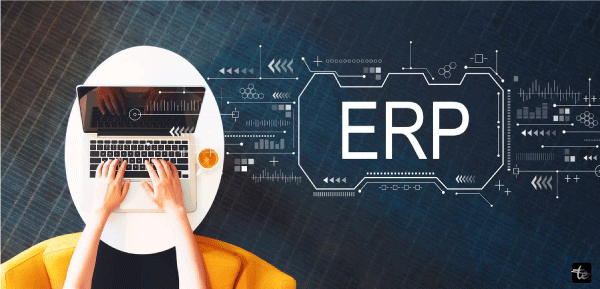
1. Inventory ManagementPreviously: To determine the current amount of inventory, the operations team of a shop uses counts of items, which it records in an Excel file. The corporation only orders more merchandise when the racks are almost empty, so warehouse workers don't trust this data, and products frequently run out of stock. The inefficiency and slowness of fulfillment stem from the fact that storage facility workers often need help discovering things. Following this, the store incorporates a replenishment module that shows the present status of stocks and changes in stock while it is being transported to the warehouse. An operations manager can decide if the company needs to issue any buying orders (POs) each morning by comparing sales data with the amount of stock that is currently on hand. Furthermore, since the stock management instrument displays the exact whereabouts of every item, the distribution team completes more orders every day. 2. AcquiringAn excessive amount of time is wasted by a manufacturer searching for manufacturers and obtaining bids for the unprocessed ingredients required to produce goods. A worker has to physically get estimates, evaluate them, decide who wins, and then submit a purchase order. Employees frequently need to make changes to their list of authorized merchants and their phone numbers, which further impedes the entire procedure. By engaging in a procurement module, a company may save a great deal of time by automating quote inquiries, centrally storing every reply, and generating purchase orders with just a few keystrokes. The purchase order (or procuring) module enables the business to monitor the state of each pending PO and maintains an up-to-date list of all providers. 3. Marketing and SalesAn experienced sales staff at a small wholesaler has become more and more irritated with the amount of effort necessary to generate orders for goods and estimates. It is difficult for the representatives to remember which clients should be prepared for a reorder, as possibilities are situated within the sales funnel. Additionally, the company wants to communicate with a wider range of prospective clients, but it is unable to handle digital ads, acquaintances, and email marketing campaigns. Sales representatives may convert estimates into orders for goods and distribute system-generated bills to consumers in a couple of hours using an enterprise resource planning (ERP) program for marketing and selling. To decide on the best course of action, both the marketing and sales departments can identify where every purchaser is in the process of buying something. The wholesaler sees a 10% increase in yearly revenue thanks to promotional tools that allow them to import mailing lists and reach new customers with mailings and advertising throughout multiple mediums. 4. ProductionIn the initial years of operation, a tiny firm kept track of daily output figures and inventory availability using spreadsheets and notepad. However, when the company expanded, those manual processes became a significant barrier since they made it difficult to determine the company's present manufacturing capabilities and cost time to produce when supplies ran short. A company can see projected throughput for the weeks and months to come and compare it with accessible and on-order suppliers after purchasing an assembly ERP component. It can monitor output in relation to that strategy and scale up?that is, order more supplies and hire more staff?if demand grows. 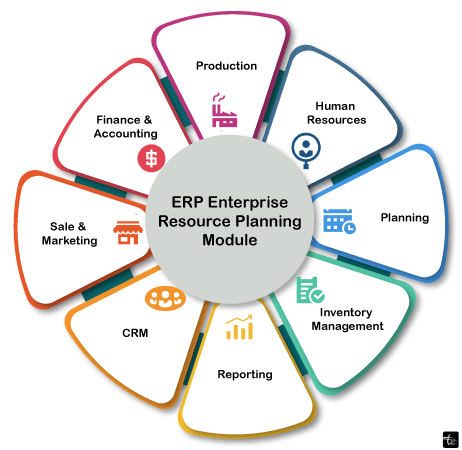
5. Financial ManagementA direct consumer (D2C) firm has an automated marketing system and a CRM (customer relationship management) system with a singular focus on providing exceptional service to its clients. However, it still needs to use a more organized set of spreadsheets along with web banking applications to handle its funds. In addition to spending a lot of time maintaining each buying order (accounts payable) and client order (the accounts receivable), this lack of insight has often put the company in risky financial situations. The company buys an accounting component that maintains a general ledger and instantly logs every one of the AP and AR transactions. The business is able to oversee its expenditures and finances more effectively. By producing important financial data like statements of cash flow, balance sheets, and transaction invoices, the tool facilitates the work of the staff accountant. The system even compares transactions to hundreds of identical records using neural networks (AI), more precisely machine learning, in order to identify possible mistakes or illegitimate payments. 6. Relationship management with customers (CRM)A manufacturing supplier experiences a plateau in revenues as competition increases. It seeks to locate upsell chances with current clients as well as acquire new ones, but the data it has on these categories is uneven and lacking. The manufacturer purchases an ERP component for CRM. A sales representative can swiftly follow up with a client or potential client by using the CRM to receive information when they complete forms on the company's website. By centralizing each client's buying history, the CRM enables the company to approach them by offering comparable goods, such as an entirely novel line of peripherals or a particular brand. Since he has access to all of the consumer's past exchanges, a customer care representative may address concerns or inquiries consumers have regarding something more rapidly. 7. Management of the Supply Chain (SCM)A rapidly expanding retailer becomes submerged in returns, and frequently experiences delayed shipments due to high demand. Despite the business's warehouses and purchase management systems, it's getting harder and harder to stay on top of all the POs, client orders, and deliveries. The store may better organize orders for products, track manufacturing in relation to demand, and prioritize purchases according to when the storage facility receives them by utilizing a supply chain management (SCM) module. When consumers return items, an associate uses the SCM software to scan every single thing, note its state of repair, and, if required, start the exchange process. As sales keep rising, the company is in an even stronger position to grow. 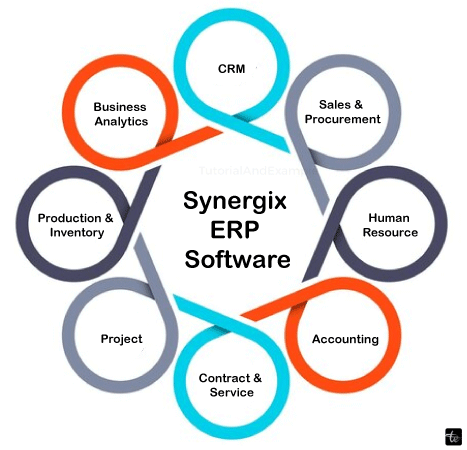
8. Management of Human Resources (HRM)Over the past three decades, the staff size of what was once a tiny family firm has tripled. The business has a simple system in place for staff members to sign in and out of; however, because payroll takes so long, its proprietors have grown to detest it. Embedded in an Excel document is information about staff members, some of it outdated. The small firm purchases an HRM Sap module. Payment is made much simpler and quicker by having the owner verify the paychecks that are generated by the system on a weekly basis to ensure authenticity. The system keeps track of staff member information, such as contact details, contract of hire, and tax data. Additionally, it guides managers and staff members throughout the yearly appraisal routines. In order to expedite the onboarding and training of freshly hired personnel, the HRM technology can even personalize these processes. The Five Essentials for Successful HRMHere are some tips for getting the most out of a purchase of an HRMS: Look into systems with an AI future and those that can leverage prediction data analysis and machine learning right now if your IT culture is forward-thinking. It is best to begin giving the system data as soon as possible. Various systems for human resources management are superior in particular domains. Is turnover high for you? Next, pay close attention to the prospective employee's management tools. Have an international or multistate workforce? Verify if the system can manage intricate payroll situations. In order to properly compute ROI, pay attention to how the framework will support talent retention, free up HR personnel for initiatives with additional value, and reduce audit results in addition to daily operations. Seek out alternatives to self-service. A professional in human resources can save time, enabling managers to get periodic reports on hours spent or giving workers possession of papers like W-2s. Make the most of the possibilities for advancement and human capital administration. HR can design training programs, customize career trajectories and learning goals, and establish programs for mentoring inside an HRM. 9. Project AdministrationA boutique consulting business has an easy-to-use financial system, yet as the company grows in number of clients, it becomes increasingly challenging to track expenses as well as assets for specific projects, which is essential for proper billing. Collecting all of this data requires work, and specialists ultimately contribute to project cost calculations. Inaccuracies in bills are frequently discovered after they are received by clients, which undermines credibility and hinders cash flow. All of this data is tracked by the project using an enterprise resource planning (ERP) component that the organization acquires for managing projects. The tool not only displays project statuses but also keeps track of designated specialists, hours worked, expenses for travel, and client correspondence. The software used for project management immediately generates and delivers a charge to the client upon reaching a specific stage. 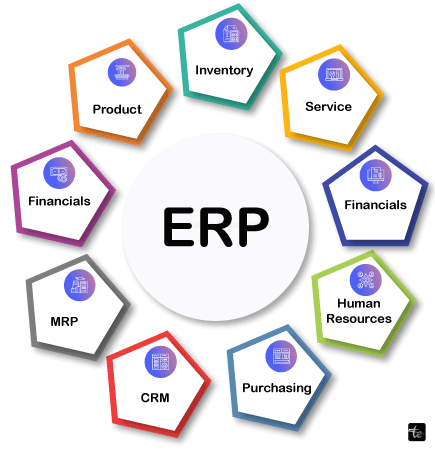
10. Monitoring ComplianceManufacturing realizes that their existing setup will not allow them to keep up with an updated accounting standard, which takes impact in a month. The producer has a two-person accountancy team. As soon as an organization realizes this will be a significant undertaking beyond the capabilities of its tiny financial team, it engages a third-party company to assist. Yet, the auditing procedure is only sometimes precise. The company that makes the product swaps in its beginning employees' bookkeeping system for a more capable system that includes auditing for compliance the following year. Legal obligations are subject to regular change, and the software will notify the company of any changes to company or regional laws as well as emerging global requirements such as IFRS 15. The financial reporting solution also makes all pertinent data linked to actions, making audit preparation considerably less intimidating. 11. Managing AssetsAfter concluding a significant investment round, an electronic business has expanded its workforce and moved into a larger headquarters. This implies that each fresh hire needs additional furniture in addition to laptops, monitors, and additional technology. A new company may handle every phase of tangible inventory, from purchasing through amortization to retiring, with the use of the assets administration ERP module. For regulatory and accounting needs, it maintains records that show the value of business supplies and computer hardware over time. It handles lease payments, amortization, and other accounting for properties in order to adhere to financial and rental accounting regulations. 12. Online shoppingFor years, a B2B distribution that only provided goods to retailers has heard about the enormous promise of directly with consumers (D2C) e-commerce. This supplier has decided it's time to expand. The corporation gives a few staff members the task of creating a D2C channel plan and choosing what products to offer online. The supplier then incorporates a shopping cart ERP module to convert its informative site into a transaction-processing online store. With the help of the module's intuitive functions, the advertising department can swiftly take advantage of e-commerce trends, add new products, alter the content of existing products, and update the site's aesthetic. Selecting a platform for online sales that is integrated with an ERP eliminates the need for external solution connections such as order, including storage management or CRM systems, since all order, consumer, and transaction information has been copied into the ERP. 13. BI, or business intelligenceA company that sells technology manages the accounting profession, advertising, marketing, client service, personnel, and more with the help of a top-tier enterprise resource planning (ERP) system. Even though this data is extremely valuable, the business is required to improve how it manipulates and presents the information in order to draw in another round of investment. To make the information easier for administrators and investors in mind to understand, the company that sells the software includes an enterprise analytics component that can transform the information into visualizations and graphs. Additionally, the tool can assist in identifying the ideal businesses for its applications to target or in estimating the possible customer base for a new product that it is thinking about building. Using data from within and outside the company, an organization's information software can even leverage AI to forecast financial results in the future more accurately. 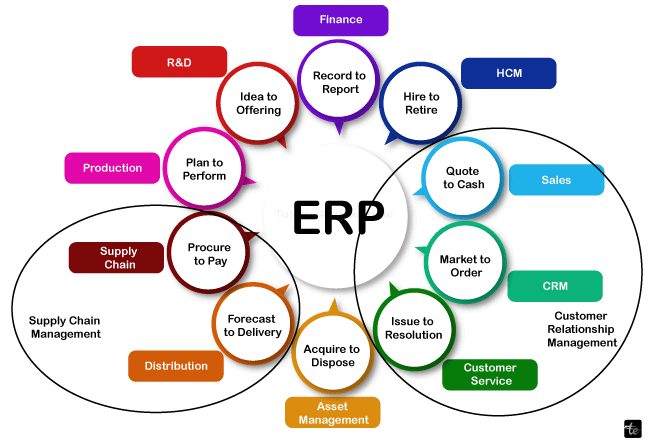
14. The Impact of MultipliersA corporation that combines many modules benefits from automatic reporting and IT optimization that goes beyond the sum of its components. Suppose CRM and online shopping are linked, for instance. In that case, the website that sells products may display personalized merchandise suggestions or even a personalized website homepage, depending on the visitor's past purchases or web browsing. That might raise the entire conversion rate and the mean value of the order. According to this, a company can monitor the typical amount of orders that every worker completes in a given hour or day with the help of connected HRM and SCM components. In order to prove that the worker goes above and beyond objectives and to convince the team's head that the worker merits a raise, the worker's manager might then use this information as they get ready for their performance evaluation. Computerized Reporting Many businesses are aware that their distribution centers are wasteful or that completing their books requires an excessive amount of time. Still, they are determining the root of those issues. Reports frequently highlight fundamental problems, such as ineffective business procedures, so executives are aware of where they should put their attention and how to address them. More information is accessible, and conclusions are more reliable when additional ERP modules are employed. Monitoring features for each component, such as the logistics chain or HR, should be included. The financial statements can cover a lot of ground. For example, how did March's expenditures contrast to April's? or limited (What was the Texas clients' average value of orders last week?). Ensure that reporting in the enterprise resource planning (ERP) solution is straightforward and simple to customize. Computer Optimisation Companies that employ separate systems for various divisions and operations need help on a daily basis with a great deal of human labor, conflicting and redundant data, and other bottlenecks. Businesses achieve this level of transparency when they implement different ERP modules that connect to a single database, providing executives with a comprehensive view of the current condition of the business. A combined system relieves strain on the IT staff, resolves problems with the accuracy of data, and enables your business to grow without increasing personnel at a rate that corresponds with growth. In addition to limiting transparency throughout the organization, beginning and disjointed systems prevent the manufacturing division from being informed of impending promotional activities that could increase purchases. The issue of maintaining employees and IT schooled on every single one of the devices is increased by having many systems, and the expense of running IT is increased. Furthermore, updates can become a big pain: if one program requires to be updated, it may have a cascading effect that requires updating every other application to which it may be "connected." Benefits of ERP Systems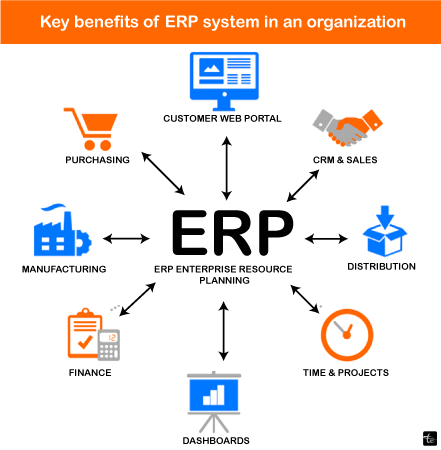
Companies of every kind and in all sectors may conserve both dollars and time while eliminating needless hassles by implementing an ERP system. The main cause of these time and money advantages is robotics, which frees up workers to concentrate on other activities by doing away with physical labor. Additionally, having just one source of knowledge enables staff members to identify possible mistakes early on and fix problems before they become more serious issues. ERPs place plenty of data at decision-makers' disposal to speed up and enhance company operations, even if there are some tasks that they need to be able to automate. Professionals may locate any data or analyses they require to make more effective, more educated choices that include basic details such as accounting documents and client details to more sophisticated solutions that use AI to optimize the planning of demand along with manufacture. Continuous business performance also depends on ensuring adherence to local, national, and international legislation, and this is something that the application supports. A cloud ERP delivers the benefits mentioned above and more, which on-premises systems can't compete with, positioning businesses particularly well for the decades to come. For instance, with cloud-based enterprise resource planning, all repairs and enhancements are taken care of by the service provider. They are incorporated into the yearly registration fees that the business pays. Additionally, the equipment evolves with the business without any issues. However, the most crucial thing is that an organization is equipped with an ERP that functions as a reliable information source for every staff member. It is now a necessary tool in the highly competitive marketplace of today to succeed.
Next TopicKey Features of ERP
|
 For Videos Join Our Youtube Channel: Join Now
For Videos Join Our Youtube Channel: Join Now
Feedback
- Send your Feedback to [email protected]
Help Others, Please Share










